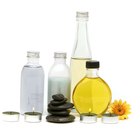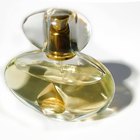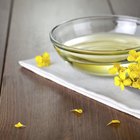
When you're looking for a cooking oil for everyday use, canola has a lot to recommend it. It's among the lowest in saturated fat and contains a well-balanced mixture of heart-healthy omega-3 and omega-6 fatty acids. Its flavor is neutral enough and its smoke point high enough for almost any culinary purpose, and it's both inexpensive and readily available. Cooks wanting to use less oil or replace expensive pan sprays can transfer canola oil to spray bottles, which increases its versatility.
Canola Oil Basics
Canola is part of the large family of brassicas, which includes cabbages, broccoli and mustard. It's derived from an oilseed plant called rape, which had been used for centuries as a food oil and lubricant. Rape oil hadn't been used as a food in North America because of its high levels of erucic acid and glucosinolates, two substances known to have adverse health effects on humans. Over a period of decades, researchers in Canada -- a major grower of rapeseed -- bred a strain of rape without those components, replacing it with healthy oleic acid. The new variety was christened "canola," hinting at its Canadian heritage and skirting the multiple negative connotations of the word "rape."
Misters
Many manufacturers produce a line of spray bottles, or misters, designed specifically for oils and other food products. They simulate commercial pan sprays by incorporating a pump mechanism. Cooks pump the bottle vigorously for a few moments to build air pressure inside the bottle, then spray the oil. As the name suggests, misters are designed to break the oil into very fine droplets, just as a commercial spray does. Misters can be used to turn regular canola oil into a replacement for pan spray, and they're also handy anywhere a very light coat of oil is desirable. For example, they're ideal for spraying breaded chops so they'll brown more readily in the oven.
Spray Bottles
Conventional spray bottles, like the ones used for misting plants, are a less sophisticated alternative. Most can be adjusted from a fine mist to a direct stream of oil, but even the finest setting isn't usually as fine as the spray from a mister. Try a few before finding one that meets your needs. Spray bottles are less-suited for spraying baking pans, because of their coarser mist, but can help reduce your oil usage for skillet frying and other purposes. They're excellent for misting salad greens, or for lightly coating potatoes and other vegetables with canola oil before roasting them.
Tips
Spray bottles are somewhat more convenient than misters, because using them just requires squeezing their trigger, rather than pumping the bottle. Be sure to only purchase bottles that are explicitly labeled as food-grade plastic and spraying. To make a better pan spray, add a small amount of liquid lecithin -- available at health and bulk food stores -- to your canola oil. Oil can sometimes cause your bottle's nozzles to clog over time, and lecithin helps minimize this. If your bottle clogs, wash it well with hot, soapy water, then spray the water through the nozzles until they run clean. Rinse the bottle thoroughly, then spray hot, clean water through the nozzles to get out the soap.
Related Articles

Substitutes for Groundnut Oil in Cooking

How to Make Cologne From Essential Oils

Cooking Oils With Low Smell

The Advantages of Wok Cooking

How to Refinish Cast Iron Cornstick Pans

How to Extract Eucalyptus Oil

How to Dilute Patchouli Oil

Difference Between Body Spray & ...

What Is Magnalite?

Can You Use Extra Light Olive Oil in a ...

How to Clean a Popcorn Machine

Alternatives to a Deep Fryer

How to Make a Mojo Potato
Can Vegetable Oil Go Bad After the ...

How to Buy Perfume Testers

What Is a Perfume Atomizer?

What Type of Oil Can I Use to Deep Fry ...

Are Teflon-Coated Pans Oven-Safe?

Wild Growth Hair Oil Directions

What is Rapeseed Oil?
References
- On Food and Cooking: The Science and Lore of the Kitchen; Harold McGee
- Healthaliciousness: Nutrition Facts Comparison Tool -- Canola, Soybean and Corn Oil
Resources
Writer Bio
Fred Decker is a trained chef and prolific freelance writer. In previous careers, he sold insurance and mutual funds, and was a longtime retailer. He was educated at Memorial University of Newfoundland and the Northern Alberta Institute of Technology. His articles have appeared on numerous home and garden sites including GoneOutdoors, TheNest and eHow.
Photo Credits
Hemera Technologies/Photos.com/Getty Images